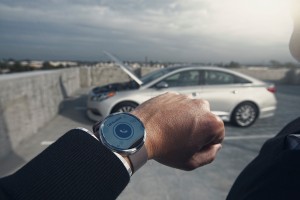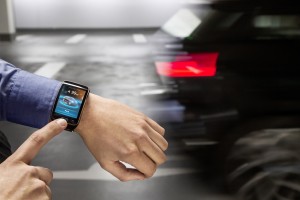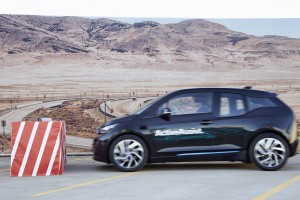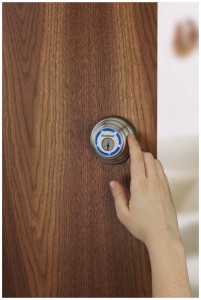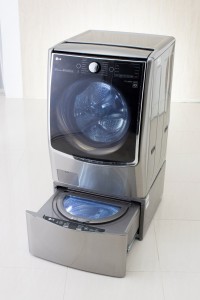Previously, in Part 1, I covered the trends that are affecting personal computing which encompases laptops / notebooks, tablets including the “2-in-1” convertible or detachable units, and the smartphones.
As I continue coverage of the trends shown at this year’s Consumer Electronics Show, I am highlighting what is being highlighted when we think of the connected world and the Internet Of Things. This is where devices we have on ourselves or use in the home, or the cars we drive, connect to each other and the Internet to acquire a range of impressive capabilites.
Wearable technology
There is an increasing number of smartwatches and other wearables being launched at this year’s Consumer Electronics Show. These are based on the Android Wear platform along with Tizen and other proprietary wearable platforms. It is although Apple has their smartwatch close to launch as part of their iOS ecosystem. A question that often came to mind is whether the smartwatch is to be seen as a bridge device between your smartphone and other wearable devices.
Sony raised the bar for Android Wear by integrating a GPS in to the metal-look variant of their Smartwatch 3 Android Wear watch. It may be seen as a way to provide standalone navigation and distance measurement for this watch or to serve as a secondary GPS sensor for your smartphone.
LG had headed towards smartwatches by putting forward one that is to run WebOS. This is part of having their devices run the descendent of the Palm operating system which HP refashioned as WebOS.
Lenovo had jumped on the wearable bandwagon by offering the Vibe lineup of wearable products. At the moment, the first of these products is the Vibe Band which is a water-resistant fitness band that uses an e-ink display, allowing for this device to run longer on a single battery charge.
There have been a few weirdly wonderful wearable devices like some snowboard bindings that help you plough through the powder better. These bindings measure the forces you apply on your feet as you slide down the slope and an app uses your smartphone’s GPS and these sensors to assess your snowboarding prowess. There is the Misfit LED which works alongside the Misfit range of activity trackers to show how you are performing. But the most weird device is the Emiota Belty which is a men’s dress belt that records your waistline and reports it back to your smartphone.
The smartwatch is becoming part of the “connected car” ecosystem thanks to some vehicle builders. As I will mention below, BMW uses the smartwatch as a key fob that is to be part of their self-parking setup that they are working on. But Hyundai has presented the Blue Link app for the Apple Watch and Android Wear platforms so you can use this watch like the typical button-equipped car keyfob. Think of this as being to touch your watch to start your Veloster from afar, open its doors or have that coupe flash its headlights so you can locate it in the car park.
The connected car
Speaking of which, the car that links to the home network and the Internet is being given a fair bit of airtime by most of the vehicle manufacturers. This is promoted by Mercedes-Benz who were exhibiting a capsule-style self-driving concept car, Ford demonstrating their idea of a self-driving car, and other vehicle builders talking about the self-driving idea for cars.
BMW took the modest path by demonstrating a self-parking variant of the i3 car. This smartwatch-controlled car looks for a parking spot by itself and implements a map-based setup where it has pre-loaded maps of car parks. This is very like a valet-parking setup but without the car-park attendant parking your car for you in that car park.
Ford launched the third iteration of their Sync connected-car technology which will implement a touchscreen as part of its control surface and use of Blackberry QNX technology. This is intended to be part of what will be offered for the 2016 model-year vehicles.
Even the chipset manufacturers have dipped their finger in the connected-car scene with NVIDIA announcing that they are purposing Tegra and similar processors to power the connected-car dashboards.
As for infotainment, there is a trend to support both Android Auto and Apple CarPlay in both factory-supply and aftermarket infotainment setups. This means that the advanced abilities of these systems can work in a system-native manner to both iPhone and Android users. The Volkswagen Group had put this forward in the latest factory-spec infotainment setups and were even involved in the level-playing-field idea of MirrorLink even when it was put forward.
Parrot have premiered the RNB6 which is a 2-DIN media unit which runs both Android Auto and Apple CarPlay but has 55 watts per channel output for all of the channels along with more options. Pioneer have launched this function in to some of their newer 2-DIN car radios. These efforts satisfy realities that exist in countries like Australia where people are likely to keep their cars on the road for a very long time.
Internet Of Everything
The Internet Of Everything has become a key feature of this show with companies either showcasing new gadgets that link with the Internet or showcasing improvements for existing gadgets with this kind of ability. Most of these devices are still pitched as a “system” of devices, cloud services and apps supplied by the same vendor that are dependent on each other and there haven’t been any devices that are pitched in a manner where they can work with other manufacturers’ devices, services or apps.
There have been some devices that are targeted at your baby’s health such as a smart baby bottle holder measures food intake. Another of these is a Bluetooth-connected infant thermometer that uses your smartphone as its display with this being developed by the company that is behind Moto’s smart temporary tattoo.
Parrot has launched houseplant water monitors that link to the home network. One is the H2O which is a sensor and automated watering system that you can use in-situ with your plants and the other is the Parrot Pot to put your plant into.
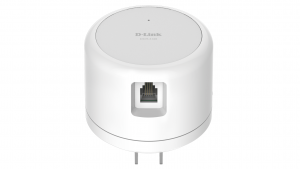
D-Link myDLink water detector alerts you via your smartphone if your washing machine leaks or the bath overflows
BeeWi and D-Link are snapping at Belkin’s WeMo home-automation technology with their own technology. The latter have packaged it in as their myDLink package which is dependent on a home-automation hub even for the Wi-Fi devices. They have Z-Wave motion sensors and door magnet/reed sensors which interlink with this hub and also work as ambient temperature sensors.
They also have a Wi-Fi-based water-leak sensor that uses a wire to sense leaking water from that dribbling washing machine along with a Wi-Fi siren unit and smart plugs. This system is managed on your mobile device through an app that D-Link supplies. TRENDNet are running a HomePlug-based home automation package that links with their TPL-406E HomePlug AV500 adaptor and the THA-102PL appliance controller with both devices using the AC wiring to communicate to each other. They also have the THA-103AC which is a Wi-Fi-managed appliance controller that works as an AC750 Wi-Fi range extender and both these systems are controlled using an app for the iOS and Android platforms.
Two companies that are known for the common door lock have fielded some “smart-lock” products, but they are focused around the “bore-through” cylindrical deadbolt form-factor that is common on many American front doors. Firstly, Kwikset have provided an IP bridge and online service for their Kevo smart deadbolt. Here, the Bluetooth-IP bridge and online service allows for such functions as “remote unlock” for situations like when you have a friend or relative who doesn’t have a smartphone with the Kwikset Kevo app to come to your house to do some caretaking or fetch something for you or to have a repair technician visit your house to perform some repair works on an appliance while you are at work. The service is offered as an annually-billed service. August who offer a similar Bluetooth-driven smart lock have come up this path using their own IP bridge to provide “remote check / remote release” functionality.

Yale Real Living smart deadbolt – enter using the code on the keypad or touch your open-frame smartphone to it
As well, Yale have launched an NFC-based smart lock that works to the Seos NFC-based smart locking platform that ASSA Abloy, the “Electrolux” of the door-hardware industry, have established. This is one that comes in the same form factor as the Kwikset Kevo but doesn’t use a key outside as a failover method. As well, it requires you to touch your NFC-capable Android smartphone to the outside keypad to unlock your door.
Tagg are working with Alarm.com to implement a tracker system for your pets. This will be based around a collar attachment that implements GPS to locate and uses 3G as a “report-back” mechanism.
The CES tech fair has given Roost some boost with their “smart battery” for existing smoke alarms. Here, they were able to show and demonstrate this battery in action as a monitoring device for the common smoke alarm.
Appliances
Unlike the Internationaler Funkaustellung where a home-appliance trade show had been merged with this consumer-electronics trade show, there has become an increasing de-facto presence of home appliances at the Consumer Electronics Show. This has been brought on by some of the Korean and Japanese consumer-electronics manufacturers wanting to show their appliances at this trade show along with appliances, both major-class “white-goods” and countertop “small-goods” and is demonstrating that home appliances are increasingly becoming part of the “Internet Of Things”.
Dacor used this show to premiere their Android-controlled ovens which used an “app-cessory” approach to controlling these ovens. This also goes alongside the use of a touchscreen as a local control surface and is representative of what is to come about for premium “white goods”.
LG have fielded some interesting “white goods” at this show. The show-stopper for them in this department was the Twin Wash “drawer-load” second washing machine which is installed underneath their recent front-load washing machines. It works in a manner where you can wash a small load while the main machine is processing another load. The example often cited was for ladies to wash a change of delicate underwear on the delicate-wash cycle while the main machine runs a lot of normal-cycle washing. Another example from my experience would be to turn around two white shirts by themselves while a large quantity of coloured clothes is being washed, with everything being ready to dry at the same time. They also fielded a “double door-in-door” fridge for easier organisation of food in the fridge. Samsung were fielding some interesting appliances like a dual-cavity oven and their “ActiveWash’ washing machine which implements an advanced wash action.
The coffee making scene closes in to the home network more with Smarter running a “bean-to-cup” espresso machine for the US market which uses Wi-Fi technology to facilitate its app-cessory control surface.
In the next part of this series, I will be looking at what the Consumer Electronics Show 2015 is representing for entertainment in the connected home.

